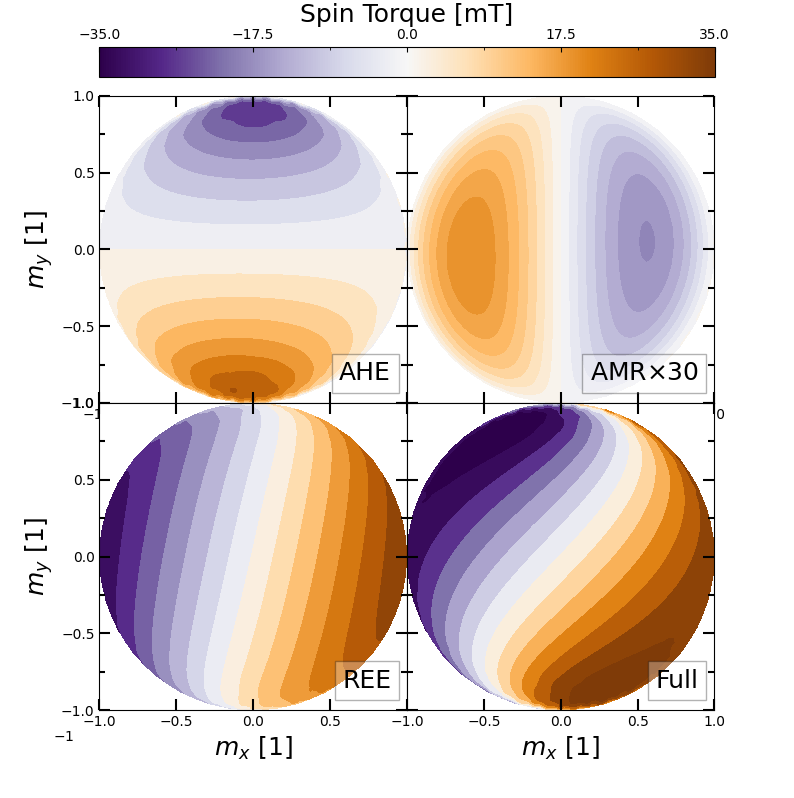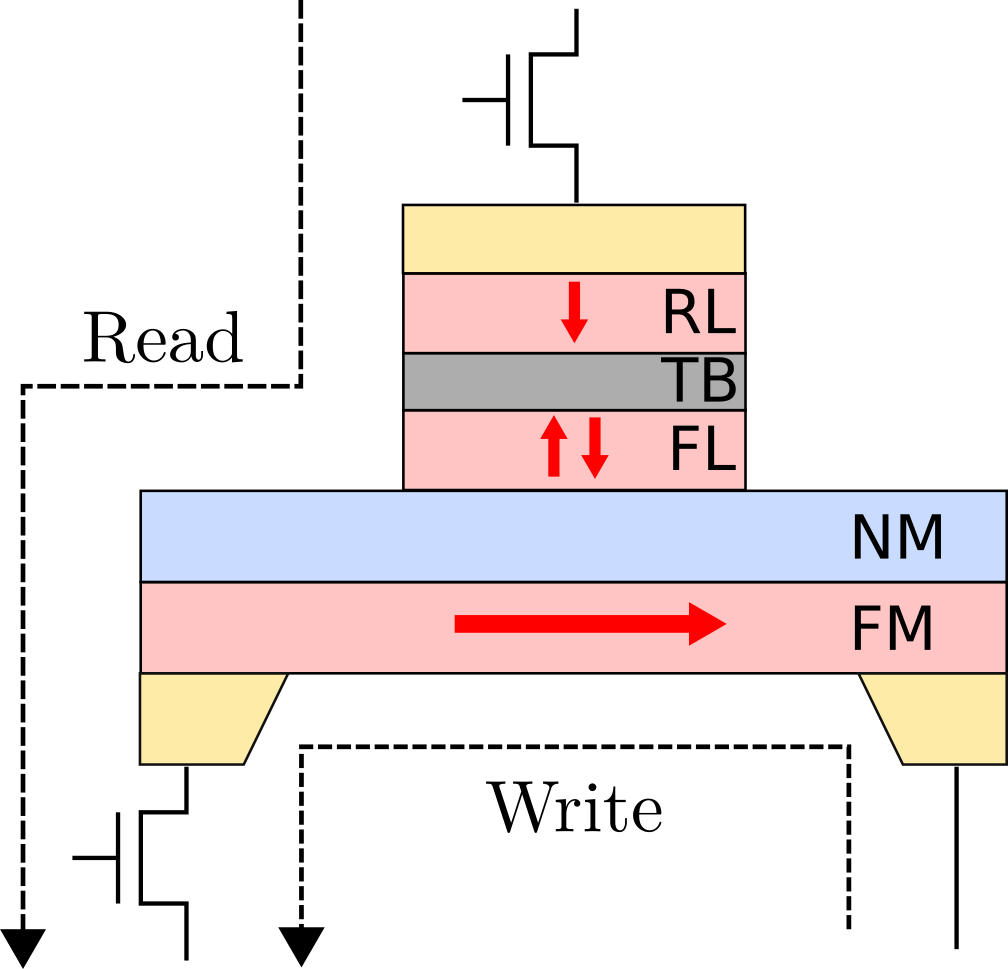 |
|
||||
BiographyNils Petter Jørstad was born in Warsaw, Poland, in 1995. He received his Bachelor’s degree in Physics at the Norwegian University of Science and Technology (NTNU), Norway, in 2019. After a summer internship at Manipal University in Jaipur, India, he enrolled in the Master’s program in Physics at NTNU. He obtained his Master’s degree in 2021, specializing in computational physics. Nils joined the Institute for Microelectronics in September 2021, where he is pursuing a PhD degree focusing on the implementation of spin and magnetization dynamics in simulations of non-volatile magnetic memory devices. |
|||||
Unconventional Spin-Orbit Torques in Ferromagnetic Trilayers
The use of current-induced spin-orbit torque (SOT) in heavy metal (HM)/ferromagnet (FM) bilayers can efficiently control FM magnetization. In-plane polarized spin currents generated through the spin Hall effect (SHE) and Rashba-Edelstein effect (REE) in the HM by an in-plane electrical current are injected into the adjacent FM, where the polarization aligns with the magnetization direction. Due to the conservation of angular momentum, the magnetization experiences a torque. However, the symmetry of the bilayer SOTs makes it impossible to reverse a perpendicular magnetization orientation, which is desired for improving the density of SOT devices without additional effort. One possible solution is introducing an additional FM layer below the HM with a fixed magnetization direction. Depending on this layer's material and magnetization direction, an out-of-plane polarized spin current capable of breaking the bilayer symmetry is generated in the bulk and at the interface of this layer.
In order to optimize and facilitate the adoption of the unconventional SOTs in FM/HM/FM trilayers, a thorough exploration of the parameter space is necessary, along with rigorous simulations of the resulting magnetization dynamics. Figure 1 displays a FePt/Cu/CoFeB trilayer structure. The magnetization direction of FePt is indicated by the in-plane magnetization components mx and my. By assuming the spin currents generated by anomalous Hall effect (AHE) and anisotropic magnetoresistance (AMR) in FePt, along with REE at the FePt/Cu interface, the resulting torques acting on CoFeB magnetization are calculated. Figure 2 shows the out-of-plane spin torques acting on the magnetization of the CoFeB layer as a function of FePt magnetization direction for positive mz. The magnetization of the CoFeB layer is kept perpendicular to both the electrical current and the interface normal, which corresponds to the high-symmetry direction along which the torques originating from the SHE and REE in the bilayer vanish, leaving only the unconventional trilayer torque contribution. Fig. 3 shows a SOT magnetoresistive random access memory (SOT-MRAM) cell utilizing the trilayer torques to achieve perpendicular magnetization reversal. The separation of read and write paths in SOT-MRAM allows for near-unlimited endurance. In addition, it is nonvolatile and can achieve sub-ns switching times, making it a promising candidate for replacing SRAM in future cache memory.

Fig. 1: Depiction of the considered FePt/Cu/CoFeB trilayer system. A current flows along x through the trilayer. The current-induced spin torques, which manipulate the CoFeB magnetization, depend on the fixed FePt magnetization direction.

Fig. 2: Out-of-plane spin-orbit torques acting on a CoFeB layer in the FePt(10 nm)/Cu(1 nm)/CoFeB(1.2 nm) trilayer when the magnetization of the CoFeB layer points along -y. A 5*10¹²A/m² current along x induces the torques. Panel (a), (b), (c), and (d) show the contribution from the AHE, AMR, REE, and the total torque, respectively.

Fig. 3: A sketch of a SOT-MRAM cell. The logical state is stored in the relative magnetization orientation of the free layer (FL) and reference layer (RL), which are separated by a tunneling barrier (TB), together forming a magnetic tunneling junction (MTJ). The MTJ is placed on the FM/HM write line, where the trilayer SOTs are generated and injected into the FL. The write line crosses the MTJ, as the resistance depends on the MTJ state.


